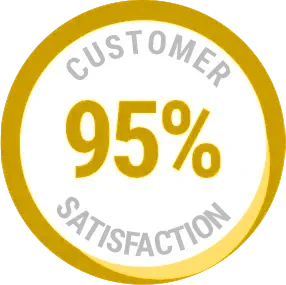Call Us Now (833) 261-2677
BLOG

Small Business Lending Made Simple: A Step-by-Step Guide
“Business lending is not just a transaction; it's a trust-filled partnership, fueling dreams and forging futures.”
In the thrilling journey of entrepreneurship, some milestones require more than passion and persistence — they require financial fuel. For many small business owners, while the vision is clear and the drive is unyielding, there's a palpable hesitation when navigating the business lending world. The myriad of terms, the vast array of options, and the sheer weight of financial responsibility can be, frankly, intimidating. Yet, securing that pivotal loan might bridge your business's current state and its potential pinnacle. "Small Business Lending Made Simple: A Step-by-Step Guide" seeks to be your compass in this crucial expedition. Through this guide, we aim to simplify the complexities of the lending process, ensuring that you, the entrepreneur, are armed with knowledge, confidence, and a clear strategy to secure the best possible financial backing for your business dream.

With that said, here are 10 steps to help you get loans for your business today! 👊
Step 1: Assess Your Needs
Budgeting: Understand exactly how much money you need. Are you covering startup costs, inventory, expansion, or managing cash flow?
When you're considering a business loan, it's vital to budget effectively to ensure you borrow the right amount and can repay the loan comfortably. Let's look at strategies specifically tailored for businesses budgeting for a loan:
1. Loan Purpose Analysis:
Before diving into numbers, list down the primary reasons you're seeking the loan. Whether it's for new equipment, inventory, expansion, or bridging a cash-flow gap, understanding the purpose will help you determine the exact amount needed.
2. Projected ROI Budgeting:
When taking a loan for a business investment (like new equipment or expansion), estimate the expected Return On Investment (ROI). If, for instance, a new machine will increase production and profits, calculate the projected income against the cost of the loan. This ensures the loan will be beneficial in the long run.
3. Cash Flow Forecasting:
Examine your business's cash flow projections for the duration of the loan. This will help you understand how much you can comfortably afford in monthly repayments without straining your operations. Consider the seasonality of your business if applicable.
4. Debt Service Coverage Ratio (DSCR) Calculation:
DSCR gives you a clearer picture of your business's ability to cover loan repayments from your cash flow. It's calculated as:
DSCR=Net Operating IncomeTotal Debt ServiceDSCR=Total Debt ServiceNet Operating Income
A ratio above 1 indicates that the business generates enough cash to cover its debt obligations.
5. Scenario Analysis:
Model best-case, worst-case, and average-case scenarios for your business's future financial situation. This prepares you for any potential challenges during the loan repayment period and ensures resilience in the face of unforeseen circumstances.
6. Existing Debt Review:
If you have existing debts, evaluate their terms and interest rates. By consolidating high-interest debts into a single lower-interest loan, you might reduce monthly outflows and improve financial management.
7. Factor In All Costs:
When calculating the amount needed, don't just consider the principal amount. Factor in interest rates, any one-time fees, ongoing fees, and potential penalties. This ensures you don’t fall short because of overlooked costs.
8. Emergency Buffer:
Consider adding a buffer of 5-10% to the loan amount you've budgeted for. This provides wiggle room for unexpected expenses or if costs end up being higher than estimated.
9. Repayment Plan:
Draft a clear repayment strategy. Decide whether you'll be making daily, weekly, or monthly payments, and ensure your business's cash flow aligns with this schedule.
Duration: How long do you need the funds for? Short-term loans typically last under a year, while long-term loans can extend beyond that.
Short-Term Loans:
Short-term loans are designed to meet immediate business needs and are typically repaid within a year.
Features:
Speedy Approval: These loans usually have a quicker approval process compared to long-term loans.
Higher Interest Rates: Due to the short duration, lenders might charge higher interest rates to ensure profitability.
Flexible Use: They can be used for a variety of purposes, from managing cash flow gaps to purchasing inventory.
Ideal for:
Seasonal businesses that need funding to buy inventory ahead of a busy period.
Businesses facing a temporary cash-flow gap due to late-paying customers.
Immediate, unexpected expenses like equipment repairs.
Long-Term Loans:
Long-term loans spread the repayment over a more extended period, typically over a year and can stretch up to 10 years or more.
Features:
Lower Interest Rates: The extended repayment period often means more attractive interest rates.
Larger Loan Amounts: Typically allow for more substantial sums of money compared to short-term loans.
More Stringent Qualification: Lenders might be stricter in their approval process since there's a more extended period of risk involved.
Ideal for:
Businesses looking to expand, whether that means opening a new location or buying a significant amount of equipment.
Refinancing or consolidating other, more expensive debts.
Long-term, high-value projects that will generate a return over several years.
Step 2: Understand Your Eligibility
As you embark on your journey to secure a business loan, it's imperative to understand the metrics lenders use to evaluate your application. Lending, at its core, is a calculated risk assessment. Here's a deeper dive into the primary factors that influence your eligibility:
1. Credit Score:
What It Is: Your credit score is a numerical representation of your creditworthiness, derived from your credit history.
Why It Matters: A high credit score indicates financial responsibility and discipline. Lenders use this score to gauge the risk associated with lending to you.
Improving Your Score: If your score isn't in the best shape:
Regularly review your credit report for errors and discrepancies.
Pay off outstanding debts and ensure timely payment of bills.
Reduce credit card balances and avoid opening new lines of credit before applying for a loan.
What If Your Score Is Low?: Don't be disheartened. Some lenders cater specifically to businesses with lower credit scores, albeit often at higher interest rates. Moreover, a strong business plan or collateral can sometimes offset credit score concerns.
2. Business History:
What It Is: This refers to how long your business has been operational. It's a testament to your business's resilience and adaptability.
Why It Matters: A longer business history usually means you've weathered various economic conditions, making you a safer bet in the eyes of lenders.
For New Businesses: While established businesses may have an edge, newcomers are not without options. There are specific startup loans, and other funding sources like angel investors or venture capital. Remember, a solid business plan and clear financial projections can significantly boost your case.
3. Revenue:
What It Is: This is the total income your business generates before any expenses are subtracted.
Why It Matters: Consistent revenue is a clear indicator of a business's health and its capacity to repay the loan.
Proving Your Revenue: Be prepared to share:
Bank statements, ideally showing consistent deposits.
Profit and loss statements.
Recent tax returns.
Fluctuating Revenue: If your business has a seasonal component or has experienced revenue fluctuations, be transparent about it. Offering explanations can paint a clearer picture for lenders, helping them understand the nuances of your business model.
Step 3: Research Types of Loans
Navigating the landscape of business loans can feel overwhelming given the myriad of options available. Each type of loan comes with its own set of advantages, disadvantages, and ideal use cases. Here's a comprehensive breakdown to guide you:
1. Traditional Bank Loans:
- What They Are: Loans provided by traditional financial institutions, like banks and credit unions.
- Pros:
- Favorable Rates: Usually come with competitive interest rates.
- Longer Terms: Typically offer extended repayment terms, easing the monthly burden.
- Cons:
- Rigorous Application: The process can be lengthy and require detailed documentation.
- Stricter Qualifications: Established businesses with good credit scores generally have a better shot.
- Best For: Businesses with a solid track record and those seeking larger amounts of capital.
2. SBA (Small Business Administration) Loans:
- What They Are: Loans that are not directly issued by the SBA but are backed by them, reducing the risk for lenders.
- Pros:
- Lower Rates: Thanks to government backing, these loans often have attractive interest rates.
- Flexible Terms: Offer a range of loan sizes and repayment terms.
- Cons:
- Lengthy Process: It can take longer to get approved given the bureaucratic process.
- Rigorous Criteria: They can be hard to qualify for, especially for very new businesses.
- Best For: Businesses that need substantial capital and can wait a bit longer for the funds.
3. Online Lenders:
- What They Are: Digital-first lending platforms that have streamlined the borrowing process.
- Pros:
- Quick Turnaround: Rapid application and approval processes.
- Flexible Qualifications: Often more lenient, catering to startups and those with lower credit scores.
- Cons:
- Higher Rates: To offset the increased risk, rates can be considerably higher.
- Best For: Businesses in need of fast capital, startups, or those who've been turned down by traditional lenders.
4. Microloans:
- What They Are: Smaller loans designed to assist startups or smaller businesses.
- Pros:
- Tailored for Small Needs: Perfect for businesses that don't need large sums.
- Easier Qualification: Given the smaller amounts, they often have more lenient criteria.
- Cons:
- Limited Amount: Not suitable for businesses looking for significant capital.
- Best For: Startups, businesses in the initial stages, or those with small-scale capital requirements.
5. Merchant Cash Advances:
- What They Are: A lump sum of cash in exchange for a portion of future sales or credit card receipts.
- Pros:
- Based on Sales: The repayment adjusts based on sales, easing pressure during slower periods.
- Fast Access: Often quicker to get approved for compared to other loan types.
- Cons:
- Costly: They can be one of the more expensive financing options.
- Potential Strain: If not managed correctly, daily deductions can strain cash flow.
- Best For: Businesses with variable revenues or those with high credit card transactions.
Step 4: Gather Necessary Documents
Business Plan: Outlines your business's objectives, strategies, target audience, market analysis, and financial forecasts.
Financial Statements: Includes balance sheets, profit and loss statements, and cash flow statements.
Personal and Business Credit Reports: Essential for most loans.
Tax Returns: Both personal and business returns may be required.
Legal Documents: This can include business licenses, commercial leases, or any franchise agreements.
Step 5: Compare Lenders
Entering the realm of business financing is akin to stepping into a marketplace. Just as you'd comparison shop for the best product or service, you must scrutinize and compare lenders to ensure you're getting the best deal for your business. Here’s an in-depth look at what you should consider:
1. Interest Rates:
Fixed vs. Variable Rates:
Fixed Rates: These remain constant throughout the loan term. They offer predictability in payments, making budgeting straightforward.
Variable Rates: These can change based on market interest rates. While they might start lower than fixed rates, they carry the risk of increasing in the future.
Understanding APR (Annual Percentage Rate):
What It Is: The APR represents the true cost of the loan, factoring in the interest rate, any fees, and the term of the loan.
Why It's Vital: Two loans might have the same interest rate, but different fees, resulting in different APRs. Always use the APR to compare loans for a more accurate picture.
2. Terms:
Loan Duration: This is how long you'll have to repay the loan. Longer terms might mean smaller monthly payments, but you might end up paying more in interest over time.
Payment Structure:
Frequency: Some lenders might require weekly payments, while others may be monthly.
Flexibility: Investigate if the lender offers any flexibility in payment dates, especially if your business has fluctuating revenues.
Penalties:
Always inquire about penalties for missed payments or for repaying the loan early. Some loans have a prepayment penalty, which could affect your decision if you plan to pay off the loan ahead of schedule.
3. Fees:
Origination Fees: These are charged by some lenders to process a new loan. They can be a flat fee or a percentage of the loan amount.
Processing Fees: Some lenders charge a fee for processing payments, especially if they offer multiple payment methods.
Late Payment Fees: Understand the implications of a missed or late payment. This not only includes the fees but also if it affects the interest rate or terms of the loan.
4. Reviews and Reputation:
Why It's Crucial: Past experiences of other business owners can provide valuable insights into a lender's practices, professionalism, and transparency.
Sources:
Online platforms, forums, and business groups can be goldmines of first-hand reviews.
Consider checking with the Better Business Bureau or similar organizations for any complaints or issues associated with the lender.
Word of Caution: While reviews are invaluable, also consider the bigger picture. One negative review in a sea of positives might be an outlier.
Step 6: Apply
Initial Inquiry: Many lenders offer a pre-qualification process that doesn't impact your credit score. This will give you a ballpark figure of the amount, rate, and terms you might qualify for.
Formal Application: Once you've chosen a lender, initiate the formal application. This will often involve a more in-depth credit check.
Submission of Documents: Provide all necessary documents promptly to speed up the approval process.
Step 7: Review Offer and Negotiate
Loan Agreement: This document will contain all terms, fees, rates, and conditions. Review it carefully.
Negotiation: Don’t be afraid to negotiate terms, especially if you have offers from multiple lenders.
Step 8: Close the Deal
Sign Agreement: Once you’re satisfied with the terms, sign the loan agreement.
Funds Transfer: Most lenders will transfer the funds directly to your business account.
Step 9: Manage Repayments
Automated Payments: Setting up automatic payments can help avoid late fees.
Stay Organized: Regularly review your loan statement to stay informed about the remaining balance and any applicable fees.
Step 10: Build a Relationship with Your Lender
Regular Updates: Keep your lender informed about significant business developments. This can be beneficial for future financial needs.
Refinancing Opportunities: Over time, if your business grows or the market changes, you might find opportunities to refinance your loan at better terms.
The quest for a business loan, while crucial, can often seem like navigating a complex maze. But armed with the proper knowledge, tools, and mindset, this journey can be transformed from an intimidating endeavor into a strategic, empowering decision. By meticulously preparing, diving deep into your lending options, and truly grasping the terms and implications, you're not just securing capital—you're laying the foundation for a symbiotic financial relationship. This partnership, when chosen wisely, becomes more than just a transaction; it evolves into a powerful alliance that propels your business to new heights. As you close one chapter and embark on this exciting financial partnership, remember that it's an affirmation of your business's potential, a stepping stone to your vision, and a testament to your entrepreneurial resilience.
Business Loan Checklist
Here is a quick checklist to get you started with you website blow. Remember imperfect action beats inaction, get started and keep publishing.
---
## Business Loan Checklist
Pre-Application Phase:
1. Determine Your Need:
Clearly define the purpose of the loan.
Calculate the exact amount required.
2. Assess Your Financial Health:
Check your credit score.
Review your business's financial statements (Profit & Loss, Balance Sheet).
Understand your current debt-to-income ratio.
3. Business Documentation:
Business license and permits.
Business tax returns (typically the last 2-3 years).
Business plan with clear objectives and projections.
Personal tax returns (if required by the lender).
4. Eligibility Criteria:
Research the specific requirements of potential lenders.
Ensure your business meets the minimum operational time (if required).
Application Phase:
5. Type of Loan:
Determine the best type of loan for your needs (e.g., traditional bank loan, SBA loan, microloan).
6. Compare Lenders:
Review interest rates (APR).
Understand the loan terms and fees.
Research lender reviews and reputation.
7. Collateral (if required):
Identify and value assets that can be used as collateral.
Prepare documentation for these assets.
8. Complete Application:
Fill out the lender’s application form meticulously.
Attach all required documentation.
Double-check for errors or omissions.
Post-Application Phase:
9. Loan Agreement:
Read the loan agreement thoroughly.
Ensure clarity on interest rates, repayment terms, fees, and penalties.
Seek legal counsel if necessary.
10. Repayment Strategy:
Establish a clear budgeting strategy to manage loan repayments.
Set up reminders or automatic payments to avoid missed payments.
11. Communication:
Keep an open line with your lender. Inform them if any challenges arise that might affect repayments.
12. Record Keeping:
Maintain thorough records of loan documents, payment receipts, and any correspondence with the lender.
Remember, preparation is key when seeking a business loan. Using this checklist as a guide will help streamline the process and increase your chances of securing the ideal loan for your business needs.
GET FUNDED IN 1-2-3 EASY STEP
Checking your rate won’t affect your credit score

APPLY ONLINE
Fast & Easy Online Application Our loan specialist will contact you Or call us at phone number: (833) 261-2677

REVIEW YOUR OPTIONS
You will have options to get funding in minutes.

GET FUNDED
Loans - $5,000 $5,000,000 Recieve funding in as fast 1 day
FAST, EASY, RELIABLE

10,000 +
Business Served

$2 billion+
Delivered

★★★★★
Customer Reviews
OUR FUNDING OPTIONS

EQUIPMENT FINANCING
Get funding to purchase equipment for you business to keep on growing.

WORKING CAPITAL
Quick and simple cash available
for any business purpose.

TERM LOAN
Our specialists will tailor a business
loan to fit your needs.

EMPLOYEE RETENTION TAX CREDIT
Get funding to purchase equipment for you business to keep on growing.

SBA LOAN
Get funding to purchase equipment for you business to keep on growing.

INVOICE FACTORING
Get funding to purchase equipment for you business to keep on growing.

BUSINESS LINE OF CREDIT
Get funding to purchase equipment for you business to keep on growing.
TRUSTED PARTNERSHIPS
WITH OVER 50+ LENDERS

EXCLUSIVE PARTNERSHIPS
THAT YOU CAN COUNT ON
At M1 Boss, we appreciate how investing in relationships brings mutual prosperity. Who we partner with ensures the best services available for our customers.
To discuss potential opportunities, please call(833) 261-2677
Find Out How Much Funding You Qualify For
We offer businesses and companies multiple financing and loan options to fit
their exact needs. Business financing made simple. Services you can trust.
Industry leading approval process that is easy and less intensive.
Get the capital you need to allow your business to grow, today!
Apply for a Business Loan
Business Resources
Contact Information
M1Boss LLC
10620 Treena Street Ste 230
San Diego, CA 92131
(833) 261-2677
M1 Boss © 2023 | ALL RIGHTS RESERVED | LOANS SUBJECT TO LENDER APPROVAL, The operator of this website is NOT a lender, does not make offers for loans, and does not broker online loans to lenders or lending partners. Customers who arrive at www.m1bosscapital.com are paired with a lender or a lending partner, and redirected only to lenders or lending partners who offer business loan products.
CONTACT | ADA STATEMENT | TERMS & CONDITION | PRIVACY POLICY

